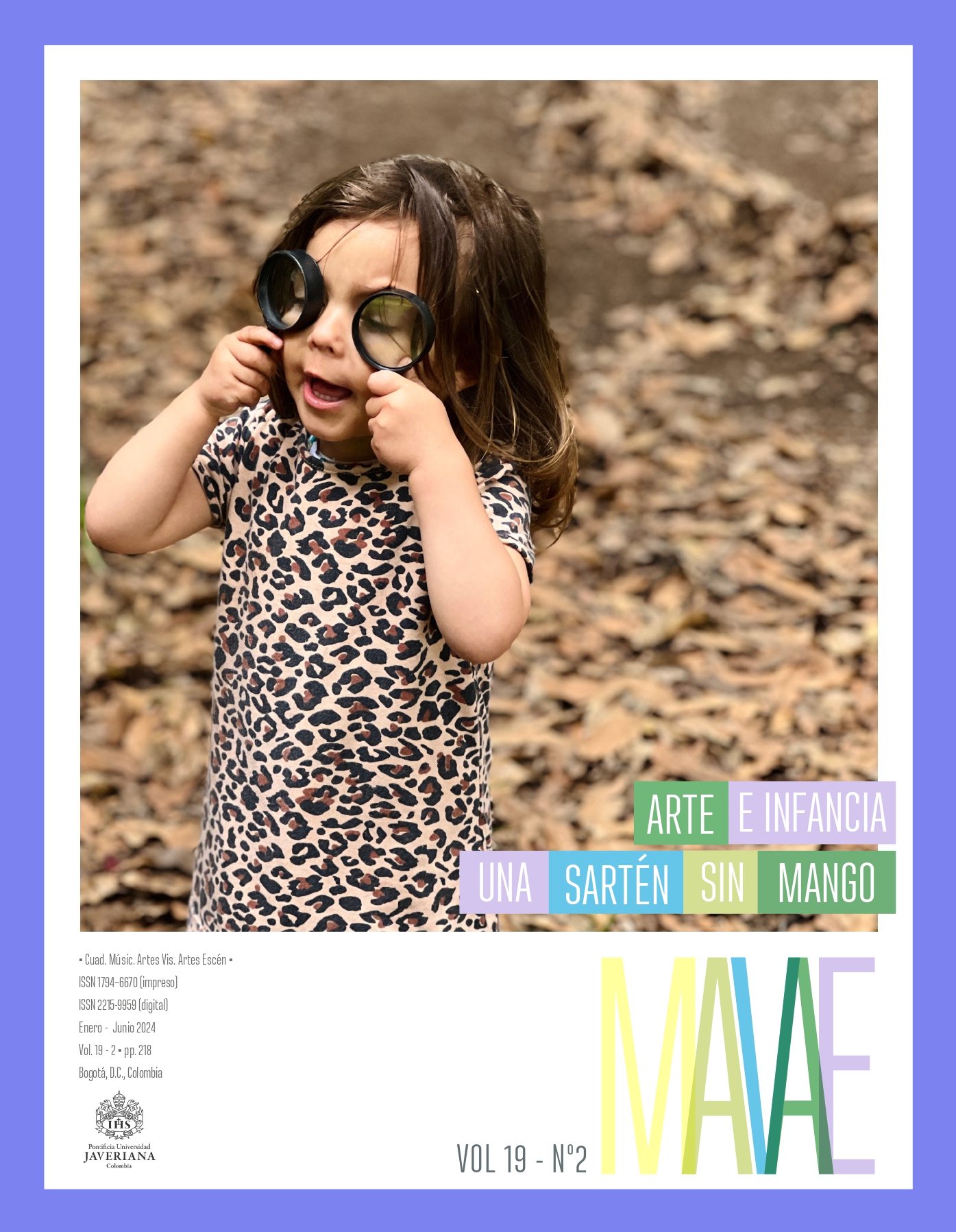Resumen
Este artículo pretende ofrecer algunas lecturas sobre la relación entre la fotografía y la formación de subjetividades en los niños. Específicamente, aborda el corte temporal entre las décadas de 1980 y 1990, con el uso popularizado de la fotografía análoga. En atención a la posibilidad de indagar en los adultos sus memorias de infancia por medio de fotografías, se hace una exploración empírica en torno a las prácticas fotográficas de esta época para identificar en ellas ciertos elementos que pueden considerarse formadores de una subjetividad infantil. Como marco de análisis, se plantean algunos hitos sobre la transformación de ciertas definiciones de la infancia en la sociedad moderna occidental, se desarrolla una perspectiva del concepto de subjetividad y se plantea que posiblemente los niños de la época abordada transitan entre una subjetividad “estatal” y una “mediática”. También se desarrollan algunos argumentos sobre cómo la fotografía y, en general, la cultura mediática es productora de subjetividades. A modo de conclusiones, se sugieren ciertas operaciones adultas en el acto fotográfico que pueden ser constituyentes de una subjetividad infantil; por ejemplo, cierto “reciclaje” de modelos visuales que datan de siglos anteriores, el uso de códigos de vestuario, la articulación con la visualidad escolar, la organización del espacio fotográfico que conlleva instrucciones sobre los cuerpos y las expresividades infantiles, la proyección emocional adulta con las expresiones infantiles y ciertos códigos que instituyen al género femenino en las niñas. Se pretende también abonar a la reflexión sobre las subjetividades de la infancia que se están conformando en la actual producción y circulación de fotografías de niñas y niños en las redes sociales.
Arias, Valentina. 2017. “Transparencia y exhibición: Nuevas formas de opresión en la civilización de la mirada”. La Trama de la Comunicación 21, n.º 2: 111-122. https://doi.org/10.35305/lt.v21i2.631
Ariès, Phillippe. 1987. El niño y la vida familiar en el antiguo régimen.Madrid: Taurus.
Bonofiglio, Leandro. 2012. “Infancia y estética”. Por escrito v6, n.º 7: 6-11. https://fundacionarcor.org/wp-content/uploads/2020/11/1387378814_porescrito_7.pdf#page=7
Bustelo Graffigna, Eduardo. 2012. “Notas sobre infancia y teoría: Un enfoque latinoamericano”. Salud Colectiva 8, n.º 3: 287-98. https://www.scielosp.org/pdf/scol/2012.v8n3/287-298/es
Byung-Chul, Han. 2021. No-cosas: Quiebras del mundo de hoy. Madrid:Taurus.
Castells, Manuel. 1996. La era de la información: Economía, sociedad y cultura. Madrid: Alianza.
Corea, Cristina e Ignacio Lewkowicz. 2004. Pedagogía del aburrido: Escuelas destituidas, familias perplejas. Buenos Aires: Paidós.
Corredor Romero, Maya Anisley. 2021. “Visualidad y contravisualidad en las escuelas secundarias en la última dictadura cívico-militar argentina (1976-1983): El caso de las revistas Inter Match y Aristócratas del Saber”. Tesis de maestría. Facultad Latinoamericana de Ciencias Sociales.
Cunningham, Hugh. 2004. “Evolución de una ideología de la infancia en la clase media, 1500-1900”. En Giros y reveses: Representaciones de la infancia a través de la historia, ed. por María Beatriz Medina, 29-66.Caracas: Banco del Libro.
Deleuze, Gilles. 1986. Foucault. Paría: De Minuit.
Dussel, Inés. 2000. “Historias de guardapolvos y uniformes: Sobre cuerpos,normas e identidades en la escuela”. En Textos para repensar el día a día escolar: Sobre cuerpos, vestuarios, espacios, lenguajes, ritos y modos de convivencia en nuestra escuela, ed. por Silvina Gvirtz, 105-32. Buenos Aires: Santillana.
Dussel, Inés. 2007. “Los uniformes como políticas del cuerpo: Un acercamiento foucaultiano a la historia y el presente de los códigos de vestimenta en la escuela”. En Políticas y estéticas del cuerpo en América Latina, ed. por Zandra Pedraza Gómez, 131-60. Bogotá: Universidad de los Andes.
Foucault, Michel. 2002. Vigilar y castigar: Nacimiento de la nación. Buenos Aires: Siglo XXI.
Higonnet, Anne. 2010. “Momentos de la infancia capturados”. Exit: Imagen y cultura, n.º 40: 130-38.
Larrosa, Jorge. 2006. “Niños atravesando el paisaje: Notas sobre cine e infancia”. En Educar la mirada: Políticas y pedagogías de la imagen,ed. por Inés Dussel y Daniela Gutiérrez. Buenos Aires: Manantial.
Olivares, Rosa. 2010. “Cazar mariposas”. Exit: Imagen y cultura, n.º 40: 8-9. Postman, Neil. 2004. “Los incunables de la niñez”. En Giros y reveses: Representaciones de la infancia a través de la historia, ed. por María Beatriz Medina, 13-28. Caracas: Banco del Libro.
Rangel Vieira da Cunha, Susana. 2012. “Pedagogía de la visualidad e infancia(s)”. En VII Jornadas de Sociología, 1-12. Buenos Aires.
Silveira Becker, Aline da. 2012. “Invisibilidades: Las infancias y los daguerreotipos del poder”. Revista Invisibilidades, n.º 2: 41-48. https://www.apecv.pt/revista/invisibilidades/02/10.24981.16470508.2.6.pdf

Esta obra está bajo una licencia internacional Creative Commons Atribución 4.0.
Derechos de autor 2024 Maya Corredor Romero


